Have you or someone you know been diagnosed with attention deficit hyperactivity disorder (ADHD)? It can be frustrating to deal with a lack of attention, impulsivity, and hyperactivity, but there’s hope for improvement.
Groundbreaking research is uncovering clues about a possible underlying cause: endocannabinoid deficiency.

Our bodies produce natural chemicals called endocannabinoids. As a part of our intricate endocannabinoid system (ECS), endocannabinoids help the brain regulate our cognition, motivation, and mood, all of which are super important for ADHD. People with ADHD seem to have lower levels of these crucial chemicals.
An endocannabinoid deficiency may end up exacerbating the symptoms, making living with ADHD a hot mess. But cannabis is here to make your life more bearable.
Cannabis compounds mimic our natural endocannabinoids, stimulating the endocannabinoid receptors.
A small but growing number of ADHD patients have already discovered the advantages of microdosing cannabis. Join them and order our hemp-derived Delta 9 edibles to supplement your brain with endocannabinoids and sharpen your focus.
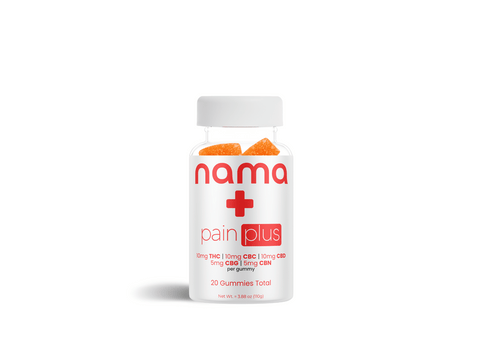

THC: 10 mg | CBC: 10 mg | CBD: 10 mg | CBG: 5 mg | CBN 5mg
What Is ADHD?
ADHD, or attention deficit hyperactivity disorder, is a common neurodevelopmental disorder that makes it challenging to focus, control impulsive behaviors, and moderate hyperactivity levels. It usually begins in childhood and affects children and teenagers, but it can persist into adulthood.
ADHD is characterized by persistent patterns of inattention, impulsivity, and hyperactivity that can significantly impair a person's daily functioning and quality of life.
What Are the Symptoms of ADHD?
Symptoms of ADHD are typically categorized into two main clusters: inattention symptoms and hyperactivity-impulsivity symptoms. Let’s take a look at a list of common ADHD symptoms for each cluster:
Inattention Symptoms:
- Difficulty concentrating
- Frequent careless mistakes
- Trouble organizing tasks and activities
- Avoiding or being reluctant to engage in tasks that require sustained mental effort
- Being easily distracted
- Forgetfulness in daily activities
Hyperactivity-Impulsivity Symptoms:
- Fidgeting or tapping hands or feet frequently
- Inability to remain seated in situations where it is expected
- Running or climbing in inappropriate situations (in children)
- Inability to play or engage in activities quietly
- Talking excessively and impulsively, often interrupting others
- Difficulty waiting for one's turn in conversations, games, or activities
- Frequently interrupting or intruding on others' conversations or games
In many cases, people with ADHD exhibit symptoms from both categories, which are known as the combined symptoms. Not everyone with ADHD will exhibit all of them, and the severity and combination of symptoms vary from person to person.
All these symptoms make living with ADHD a daunting task. This experience typically involves not only struggles with focus and impulsive decision-making but also challenges in relationships and social interactions. Missed social cues and impetuous responses can also strain friendships and family bonds for those with ADHD.
Many patients diagnosed with ADHD cope with frustration or low self-esteem because they often feel judged or misunderstood.
Based on the types of symptoms, we can also make out three different types of ADHD.
What Types of ADHD Are There?
ADHD is typically categorized into three main types, or presentations, based on the predominant symptoms that an individual exhibits. These presentations help healthcare providers better understand and diagnose the disorder.
Predominantly inattentive presentation (formerly known as ADD). People with this type may not display as many hyperactivity-impulsivity symptoms and primarily exhibit symptoms related to inattention:
- Difficulty sustaining attention
- Being easily distracted
- Forgetfulness
- Struggling with organization and time management
Predominantly hyperactive-impulsive presentation. People with this presentation often experience:
- Difficulty sitting still
- Frequently interrupt conversations or activities
- Act impulsively without thinking
- Talk excessively
This presentation is more common in young children but can persist into adolescence and adulthood.
Combined presentation. This is the most common type of ADHD, where Individuals experience a combination of both inattention and hyperactivity-impulsivity symptoms. They may have difficulty sustaining attention, be hyperactive, and display impulsive behaviors. This combined type tends to cause the most significant impairments in daily functioning and is often diagnosed in both children and adults.
Some people may experience symptoms that do not neatly fit into one of these three categories, and their diagnosis may be described as “not otherwise specified” (NOS) or “other specified ADHD.”
How Is ADHD Diagnosed and Treated?
Diagnosing ADHD typically involves a comprehensive evaluation by a healthcare professional. They use the criteria outlined in the Diagnostic and Statistical Manual of Mental Disorders (DSM-5) to make the diagnosis. The evaluation includes interviews with the individual, parents, teachers, and possibly psychological testing.
ADHD is a chronic condition, but it can be managed effectively with a combination of treatments.
- Behavioral therapies can help people with ADHD learn coping strategies, organizational skills, and time management.
- A healthy lifestyle can also be beneficial. Regular exercise, a balanced diet, adequate sleep, and stress management techniques can help manage ADHD symptoms.
- Support groups and therapy can provide emotional support and strategies for individuals and families affected by ADHD.
- Medications, like stimulants (e.g., methylphenidate or amphetamines) and non-stimulants (e.g., atomoxetine or guanfacine), are typically prescribed to manage symptoms. These medications can improve attention, impulse control, and hyperactivity, but they may also lead to a series of other health problems.
As we already mentioned, many people living with ADHD have turned to small amounts of cannabinoids like Delta 9 THC and cannabidiol (CBD) for help in alleviating the symptoms and making their lives more functional.
We know what you’re thinking: there’s no way weed can make me more functional! Au contraire, my friend. While higher amounts of cannabis have the serious potential to impair cognition and make you all “high” and unmotivated, microdosing may actually do the opposite.
Small doses of cannabis stimulate the endocannabinoid system just enough to dial back distractibility and restlessness without causing intoxication. So by supplementing what an ADHD brain may be lacking, microdoses could potentially help, not hinder, daily functionality.
Read more about Delta 9 THC and discover its benefits and therapeutic uses when taken in small, controlled doses.
What Are the Causes of ADHD?
The exact causes of ADHD are not fully understood yet. The disorder seems to result from a combination of potential factors, such as:
- Genetics: ADHD tends to run in families, suggesting a strong genetic component. If a close relative, such as a parent or sibling, has ADHD, you may be at higher risk.
- Neurological factors like brain structure and function may play a role. Differences in certain brain regions and neurotransmitter imbalances, particularly involving dopamine and norepinephrine, may contribute to ADHD.
- Environmental factors may also play a significant role:
- Prenatal exposure to toxins (e.g., smoking, alcohol, or certain drugs)
- Premature birth
- Low birth weight
- Lead exposure
- A chaotic family environment
- Early exposure to trauma
Whatever the exact cause of attention deficit hyperactivity disorder, it seems to involve an impairment in the brain’s executive functions and imbalances in neurotransmitters like dopamine, glutamate, and norepinephrine. These factors are also connected to the endocannabinoid system, more specifically, the endocannabinoid deficiencies.
Before we explain the link between ADHD and a lack of endocannabinoids, let’s first explore the intricate role of our endocannabinoid system. You may have never heard of it before, but this complex network helps regulate many critical processes in both the body and the brain.
What Is the Endocannabinoid System?
The endocannabinoid system is a complex network of chemical signals and receptors that have “pivotal roles in a diverse range of physiological and pathophysiological states, including behavior, pain, schizophrenia, obesity, Alzheimer disease, multiple sclerosis and cardiovascular disease.” (Lerner, et. al.)
Its main role is to maintain the internal balance and stability of our body. The ECS regulates a long list of vital bodily functions:
- Sleep
- Mood
- Pain perception
- Temperature
- Appetite and metabolism
- Digestion
- Immune response
- Neuroprotection
The main elements of a healthy ECS are endocannabinoids, cannabinoid receptors, and enzymes.
- Endocannabinoids are naturally occurring neurotransmitters. A neurotransmitter is a chemical messenger that relays signals (messages) between neurons. Endocannabinoids bind to our cannabinoid receptors to signal them that the ECS needs to take action. Two of the most researched endocannabinoids are anandamide (AEA) and 2-arachidonoylglycerol (2-AG).
- Cannabinoid receptors are activated by both endogenous cannabinoid systems and exogenous cannabinoids, such as phytocannabinoids that come from the cannabis plant. The two main receptors are CB1 and CB2 receptors. Endocannabinoids bind to these receptors to activate them and exert their effects.
- Endocannabinoid enzymes help produce and breakdown endocannabinoids. This maintains equilibrium in the ECS and prevents overstimulation of the receptors. Excessive signaling and overstimulation may lead to increased anxiety, paranoia, and cognitive impairment, which are the most common side effects of consuming too much THC.
The endocannabinoid system plays a major role in regulating cognition, mood, and behavior. Since these areas are disrupted in ADHD, scientists theorize ECS dysfunction could contribute to ADHD. Some people with ADHD show lowered levels of anandamide and other endocannabinoids and neurotransmitters.
One great way to boost your endocannabinoid function is with our cannabis edibles. You can choose from our rich selection of low-dose THC and CBD gummies that provide just the right amount of phytocannabinoids to gently stimulate your ECS without any of the impairment that comes from getting high. Try some of our Euphoria edibles and experience the benefits of balanced endocannabinoid function. We’re talking about improved mood, reduced stress, and enhanced relaxation.
How Do You Get an Endocannabinoid Deficiency?
Endocannabinoid deficiency (ECD) is a lack or low level of endocannabinoids in the body and brain. When endocannabinoid levels are low, this can cause inadequate receptor activation. Since the ECS regulates many important processes, a deficiency can lead to:
- Chronic pain
- Stress
- Anxiety
- Depression
- Irritable bowel syndrome (IBS)
- Chronic migraines
- Sleep disorders
- Mood changes
- Immune system dysfunction
If endocannabinoid function were decreased, it follows that a lowered pain threshold would be operative, along with derangements of digestion, mood, and sleep among the almost universal physiological systems subserved by the endocannabinoid system (ECS). (Russo)
While more research is needed to fully understand the mechanisms leading to endocannabinoid deficiency, here are some of the hypothesized causes of ECD:
- Genetic mutations affecting endocannabinoid synthesis and metabolism.
- Disruptions in endocannabinoid receptor density or binding.
- Cellular changes from chronic stress, inflammation, or aging.
- Diets low in omega fatty acids may reduce synthesis of endocannabinoids. Omega is the building block of endocannabinoids.
- Deficiencies in endocannabinoid synthesizing enzymes. Enzymes are needed to produce endocannabinoids from fats.
- Enzymes that break down endocannabinoids may be too abundant and accelerate depletion.
- Endocannabinoid receptor deficiencies. Fewer cannabinoid receptors for endocannabinoids to bind means reduced signaling.
- Chronic inflammation is thought to degrade endocannabinoids more rapidly.
- Brain injury can damage endocannabinoid receptors and disrupt signaling.
Emerging research links ECD to certain conditions like fibromyalgia, migraines, and irritable bowel syndrome. It may also play a role in neurological disorders including Parkinson's, PTSD, multiple sclerosis, and ADHD.
Many factors can contribute to endocannabinoid deficiency. Neurotransmitters seem to play a critical role here. Dopamine, serotonin, glutamate, GABA, and norepinephrine help regulate cognition, mood, focus, and impulses. Imbalances in these chemical messengers may lead to endocannabinoid deficiency and exacerbate or even cause ADHD.
Product QUIZ
Need help deciding what product is best for you? Take our quiz, just three questions until your perfect match!
The Endocannabinoid System and Neurotransmitters
Now we know that the endocannabinoid system has an important role in regulating the function of neurotransmitters and neuromodulators throughout the brain and central nervous system. If we want to understand the connection between endocannabinoid deficiencies and ADHD, we need to shed light on how the ECS influences those neurotransmitters relevant to ADHD.
Dopamine
Dopamine is a neurotransmitter associated with motivation, reward, and executive functions such as attention and impulse control. Dysregulation of the dopamine system is thought to play a significant role in ADHD. Insufficient levels of this important chemical in our brain can lead to increased anxiety-like behavior..
Even some specific genes related to the dopamine system may be connected to the disorder. Two genes, in particular, are often linked to ADHD.
Consistent results from molecular genetic studies are pointing strongly to the possible link between 2 specific genes, the dopamine transporter (SLC3A6) and the dopamine receptor 4 (DRD4), and ADHD. (DiMaio, et. al.)
Through complex interactions in the brain, the endocannabinoid system influences dopamine signaling to increase its levels and potentially alleviate symptoms of ADHD. Here’s how:
The ECS Modulates the Release of Dopamine
The endocannabinoids anandamide and 2-AG are produced on-demand and can act as retrograde messengers. When a neuron releases dopamine across the small gap between cells (called the synapse), the neighboring neuron will sometimes respond by producing endocannabinoids. These travel back across the synapse, binding to CB1 receptors on the dopamine-releasing neuron. The CB1 activation reduces further dopamine release, dampening the original signaling.
But this is a good thing. These retrograde messengers provide an important regulatory function in the brain and:
- Maintain homeostasis by keeping dopamine signaling balanced.
- Enhances specificity by dampening only the synapses that are excessively active.
- Conserving resources and saving cellular energy.
- Avoiding toxicity. Excessive dopamine can cause oxidative stress, but the endocannabinoids prevent dopamine spike-induced damage.
A 2017 study explains how endocannabinoid signaling “controls DA neuron function through modifications in synaptic strength.”
A number of excitatory, inhibitory, and modulatory inputs orchestrate DA neurotransmission by controlling DA cell body firing patterns, terminal release, and effects on postsynaptic sites in the striatum. The endocannabinoid (eCB) system serves as an important filter of afferent input that acts locally at midbrain and terminal regions to shape how incoming information is conveyed onto DA neurons and to output targets.
The on-demand production of endocannabinoids also serves as a feedback mechanism. When dopamine levels are low, the ECS may allow for increased dopamine release.
The ECS Balances Out Reward Pathways
Dopamine is involved in the brain's reward pathways. Its release is associated with feelings of pleasure and motivation. The ECS can influence these reward pathways, affecting behaviors related to reward such as motivation, addiction, and mood.
Dysregulated dopamine signaling in the brain's reward pathways contributes to some of the core symptoms seen in ADHD, like:
- Reduced motivation and procrastination
- Impulsivity and addiction tendencies
- Low frustration tolerance
- Poor cost-benefit analysis when evaluating risks
Wenzel and Cheer propose that “DA transmission mediates several aspects of reinforced behavior, such as motivation, incentive salience, and cost-benefit calculations.”
…midbrain DAergic phasic signaling transmits information about previous and current reward situations making this form of signaling particularly important for making cost-benefit analyses in the development of reinforced behaviors.
By keeping dopamine within a healthy range, the ECS can help prevent these ADHD-associated behaviors. Endocannabinoid deficiencies may fail to properly regulate dopamine, worsening ADHD symptoms.
The Role of ECS in Neuroprotection
Some studies suggest that the ECS may play a neuroprotective role by reducing oxidative stress and inflammation. Inflammation and oxidative stress have detrimental effects on dopamine-producing neurons. They can damage dopamine neurons in areas like the substantia nigra, which contributes to lowered dopamine levels.
Endocannabinoids also promote neurogenesis (the growth of new brain cells) in key dopamine regions like the hippocampus. This way, sufficient ECS tone confers neuroprotection that preserves healthy dopamine levels and neuronal functioning.
Endocannabinoid deficiencies may impair these protective mechanisms, allowing inflammation and oxidative stress to contribute to dopamine disruption.
Norepinephrine
Norepinephrine (also called noradrenaline) is a neurotransmitter involved in alertness, focus, and the body's “fight or flight” response. Many ADHD medications boost norepinephrine signaling to improve alertness and concentration.
But too much can be counterproductive. Excess norepinephrine can increase anxiety, restlessness, and impulsivity.
The endocannabinoid system acts as a brake on excessive norepinephrine release.
Endocannabinoids also modulate norepinephrine activity in the prefrontal cortex, fine-tuning signals involved in attention and working memory. An insufficient endocannabinoid tone may fail to constrain heightened norepinephrine signaling, contributing to hyperactive and impulsive ADHD behaviors.
Carvalho and Van Bockstaele show “the effects of manipulating the endocannabinoid system and modulating noradrenergic transmission” and suggest that “the two systems may interact or share some common signaling pathways.”
As you can see, norepinephrine is important for concentration, focus, and alertness, but excessive levels may drive anxiety and impulsivity in ADHD. Targeting the ECS may help normalize norepinephrine activity for better ADHD symptom management.
Who wouldn’t want to improve attention and concentration without feeling overstimulated?
Glutamate and GABA
Glutamate and gamma-aminobutyric acid (GABA) are two of the most important neurotransmitters in the brain, with crucial roles in regulating brain activity.
Although not as extensively as the dopaminergic and noradrenergic systems, the involvement of serotonergic, glutamatergic, and GABAergic systems have also been implicated in ADHD by studies associating altered levels of these neurotransmitters with ADHD. Experimental models also demonstrated that methylphenidate is able to restore impaired glutamatergic transmission at the prefrontal cortex and improve behavioral symptoms of ADHD, a process that appears to be mediated by AMPA glutamatergic receptors. (Da Silva, et. al.)
Glutamate is the primary excitatory neurotransmitter in the brain. It transmits signals between neurons that are essential for learning, memory, and cognition. Imbalances in glutamate signaling can impact attention, impulse control, and executive functions. In the case of glutamate, overactivity and increased levels of this chemical messenger—not a lack of it—might contribute to ADHD symptoms.
A 2015 study on ADHD in adults found that “hyperactivity and impulsivity in adult attention-deficit/hyperactivity disorder is related to glutamatergic dysfunction in the anterior cingulate cortex.”
Increased levels of glutamate in the [anterior cingulate cortex], which were positively correlated with hyperactivity and impulsivity, support the hypothesis that dysfunctional glutamatergic neurotransmission is at least partially responsible for ADHD symptomatology.
GABA has the opposite role of glutamate. It is the primary inhibitory neurotransmitter, and its function is to reduce brain activity by inhibiting or “calming down” neuronal signaling. This is crucial for maintaining a balanced and controlled state of neural excitation and inhibition because insufficient GABAergic inhibition may lead to difficulties in regulating attention and controlling impulses.
The endocannabinoid system can influence both of them—through its cannabinoid receptors, primarily CB1 and CB2 receptors—to help people with ADHD alleviate the symptoms. When certain endocannabinoids (such as anandamide) activate CB1 receptors, they inhibit the release of glutamate in the brain. This has a calming effect on excitatory neurotransmission.
Similarly, the ECS modulates GABAergic transmission by activating CB1 receptors, enhancing GABA release from presynaptic neurons, and leading to increased inhibition in the brain.
Here’s how this intrinsic interplay between the ECS and neurotransmitters could be relevant to ADHD:
- Dysregulation of glutamate and GABA systems may contribute to ADHD symptoms like inattention, impulsivity, and hyperactivity.
- By modulating these neurotransmitter systems, the ECS might have the potential to influence ADHD-related behaviors and cognitive functions.
The modulation of GABA and glutamate, among other neurotransmitters, can alter ADHD-related cognitive functions by calming excitatory signaling and enhancing inhibitory control. This is super important for people struggling with ADHD.
Anandamide
Anandamide is one of the main endocannabinoids. It binds to and activates both cannabinoid receptors, but its activation of CB1 receptors significantly regulates dopamine signaling. This modulates motivation, pleasure, and cognition in people with ADHD.
Interestingly, people with ADHD may show lower levels of anandamide in certain brain areas. Here’s why it’s important to stock up on anandamide if you want to mitigate your ADHD symptoms:
- Anandamide dampens excessive glutamate and GABA activity through presynaptic CB1 activation. This helps you rein in hyperactivity and poor impulse control.
- This endocannabinoid reduces inflammation and oxidative stress, which damage dopamine neurons when unchecked. Its anti-inflammatory effects work through multiple mechanisms, including microglial regulation. According to a 2020 study, anandamide reduces inflammation in the cardiovascular system by blocking the expression of specific inflammatory genes.
- Endocannabinoid signaling is implicated in brain development, memory formation, learning, mood, anxiety, depression, feeding behavior, analgesia, and drug addiction. It is now recognized that the endocannabinoid system mediates not only neuronal communications but also governs the crosstalk between neurons, glia, and immune cells, and thus represents an important player within the neuroimmune interface. (Kasatkina, et. al.)
- Anandamide’s anti-inflammatory effects may also improve ADHD-associated emotional dysregulation. This endocannabinoid limits excessive norepinephrine release from the locus coeruleus by controlling the HPA axis. HPA, or hypothalamic-pituitary-adrenal axis, is one of the body's stress response systems. It triggers the release of stress hormones (cortisol and norepinephrine) during acute stress. In people with ADHD, the HPA axis tends to be overactive, contributing to chronically high levels of norepinephrine.
The way anandamide modulates multiple neurotransmitter systems is critical for motivation, impulse control, hyperactivity, and emotional regulation linked to ADHD. Anandamide deficiency may, therefore, worsen ADHD by failing to properly regulate these pathways.
Is ADHD Linked to Endocannabinoid Deficiency?
Research has shown that abnormal dopamine transmission and dopamine deficiency are associated with ADHD, which seems to implicate the endocannabinoid system. The endocannabinoid system contains CB1 and CB2 receptors, which are activated by the endogenous cannabinoids anandamide and 2-AG.
Dysregulation in the endocannabinoid system, more specifically, in the levels of endocannabinoids, their receptors, and certain neurotransmitters, might be triggers for ADHD. The link may be the endocannabinoids and their strong influence on dopaminergic, GABAergic, and glutaminergic signaling in areas of the brain important for motivation, reward-seeking, hyperactivity, and emotional regulation.
A 2022 study found that mice lacking CB2 receptors in their dopamine neurons may serve as a model for investigating the neurobiological basis of ADHD. The absence of these receptors appears to influence behavior, including hyperactivity, anxiety, impulsivity, and attention, which are relevant to ADHD-like symptoms. The study also found that:
- Both male and female DAT-Cnr2 mice showed increased activity levels in an open-field test, meaning they moved around more compared to normal mice.
- Surprisingly, when given a low dose of amphetamine (2 mg/kg), DAT-Cnr2 mice became less hyperactive, while normal mice became more hyperactive. This suggests that the absence of CB2 receptors in dopamine neurons can alter the response to amphetamine.
- DAT-Cnr2 mice spent more time in the open arms of an elevated plus-maze, indicating reduced anxiety-like behavior. They also exhibited impulsivity and risky behavior in tests.
- Microglia, immune cells in the brain, were more activated in the hippocampus of DAT-Cnr2 mice compared to normal mice. This suggests that CB2 receptors in dopamine neurons might have a role in regulating neuro-immune interactions.
More research is needed to conclusively confirm the link, but this is what we know so far about endocannabinoid deficiencies playing a role in ADHD:
- Altered endocannabinoid levels, particularly anandamide, in people with ADHD indicate deficient endocannabinoid tone.
- Variations in endocannabinoid genes related to receptor expression and enzymatic breakdown have been associated with increased ADHD risk.
- Since the ECS heavily regulates dopamine, glutamate, GABA, and norepinephrine, deficiencies could directly contribute to the disruptions in these neurotransmitters implicated in ADHD.
- Some animal models have demonstrated ADHD-like behaviors when the ECS is pharmacologically blocked or genetically knocked out.
Targeting the endocannabinoid system may provide therapeutic benefits by addressing those deficiencies and normalizing altered neurotransmitter activity. What is the best way to target the ECS? We’re so glad you asked.
Anecdotal reports indicate some ADHD patients consume lower amounts of cannabis to reduce hyperactivity, improve focus, and keep other ADHD symptoms at bay.
Check out our article on how to microdose edibles for increased focus.
Using Cannabis to Regulate Your Endocannabinoid System
It’s no secret that some people diagnosed with attention deficit hyperactivity disorder use cannabis to alleviate their symptoms and sharpen their ADHD brains. Small doses of only a few milligrams per serving may mildly stimulate endocannabinoid receptors without causing impairment. This could supplement the low endocannabinoid tone in the ADHD brain.
How Does Cannabis Interact With the Endocannabinoid System?
Cannabinoids interact with endocannabinoid receptors to signal biochemical changes in our bodies. Delta 9 THC binds to CB1 and CB2 to produce a wide range of effects, such as:
- Pain relief
- Enhanced mood and perception
- Sleep regulation
- Appetite regulation
THC and other plant cannabinoids mimic our natural endocannabinoids, providing similar neuromodulatory effects. A microdose of THC could activate CB1 receptors, gently inhibiting excessive dopamine and glutamate signaling associated with hyperactivity and poor impulse control. THC seems to be a “partial agonist” of cannabinoid receptors.
Δ9-THC, the main psychotropic constituent of cannabis, is a CB1 and CB2 receptor partial agonist and in line with classical pharmacology, the responses it elicits appear to be strongly influenced both by the expression level and signaling efficiency of cannabinoid receptors and by ongoing endogenous cannabinoid release. (Pertwee, et. al.)
It is the interaction with CB1 receptors that influences Delta 9 THC to increase dopamine levels. CB1 stimulation may increase baseline dopamine to improve motivation and attention.
Cannabinoids…increase mesolimbic dopamine transmission. Endogenous cannabinoids modulate transmission and may be exploited to develop pharmacotherapies for treating motivation disorders. (Oleeson and Cheer)
Microdosed THC also reduces inflammatory cytokines and stress hormones that exacerbate ADHD behaviors. Inflammation arising from immune system activation (in which pro-inflammatory cytokines are elevated) often co-occurs with ADHD. CB2 receptors are abundant in immune cells like microglia. By stimulating CB2 receptors, THC reduces inflammation in the brain, protects neurotransmitter function, and prevents signaling disruption.
While THC has a strong affinity for CB1 and CB2 cannabinoid receptors, CBD has a weak affinity for either. Cannabidiol influences the ECS in a more indirect way, which benefits people with ADHD.
CBD has been shown to slow anandamide breakdown. This causes an increase in anandamide levels, which may aid in mood regulation, anxiety reduction, and stress response. That’s why CBD is a great way to fight stress and anxiety.
Instead of interacting directly with CB1 and CB2 receptors, CBD seems to downregulate the function of cannabinoid receptors in the presence of THC. According to Vučković, et. al., “CBD has little binding affinity for either CB1 or CB2 receptors, but it is capable of antagonizing them in the presence of THC.”
When THC and CBD are taken together, CBD acts as a safety engineer, improving the safety and tolerability of Delta 9 THC and downregulating THC’s possible adverse effects (e.g., increased anxiety and heart rate, and sedation).
Cannabis Compounds in the Entourage Effect
CBD and THC might have more health benefits when taken together than in isolation. One study reveals that “the synergistic contributions of cannabidiol to cannabis pharmacology and analgesia have been scientifically demonstrated. Other phytocannabinoids…exert additional effects of therapeutic interest.”
This is the so-called entourage effect, a theory that suggests that synergistic interactions between cannabinoids have more medicinal and therapeutic benefits than each compound in isolation.
When phytocannabinoids interact with endocannabinoids, receptors, and enzymes, the entourage effect has an indirect impact on our endocannabinoid system. The rich complex of cannabis compounds works synergistically to supplement and restore optimal endocannabinoid tone and functioning, amplifying or regulating each other’s effects along the way.
If you thought the entourage effect was not real and could not help your ADHD work more efficiently, we’re about to prove you wrong:
- THC primarily stimulates CB1 receptors to modulate dopamine, glutamate, and other neurotransmitters. But other compounds, like CBD, regulate THC, preventing overstimulation. The last thing people with ADHD need is overstimulation.
- Terpenes like limonene and linalool boost endogenous anandamide, addressing deficiencies. Pinene helps THC cross the blood-brain barrier. All of them, working together, fine-tune the endocannabinoid system to create a balanced and harmonious environment within the brain to alleviate the symptoms of ADHD.
- CBD counters THC's intoxicating effects and memory issues. It also provides anti-anxiety and anti-inflammatory effects through different pathways.
- Cannabis compounds working together contribute to additional anti-inflammatory, neuroprotective, and dopamine regulating effects. This ensemble enhances the therapeutic impact on neurotransmitter dysfunction underlying ADHD, while preventing adverse effects.
Microdosing cannabis allows the entourage effect to gently nudge the endocannabinoid system back into balance rather than overload it.
Can THC Make Me High?
The main psychoactive compound from the cannabis plant, tetrahydrocannabinol, or THC, is known for causing certain unwanted side effects, typically known as the “high.” When you take higher doses of THC, you can experience cannabis psychoactivity, which can sometimes be overwhelming, especially if you’re new to cannabis or not-so-tolerant.
This is not the case with lower doses. Our products contain microdoses of THC and other cannabis compounds that cause no psychoactivity—just the pleasant and therapeutic effects of the purest, hemp-derived cannabinoids.
If you’re really worried about this, try our full spectrum CBD gummies. These delicious edibles mix THC with balanced ratios of CBD to reduce THC’s psychoactivity and offer the ultimate cannabis experience.
Remember how CBD has a low affinity for cannabinoid receptors and doesn’t bind directly to them? Among other things, this means that cannabidiol produces no psychoactive effects even at higher doses.
Read all about full spectrum products and what other health benefits THC and CBD together have.
Microdosing Cannabis Edibles for ADHD
Many people living with ADHD have discovered the powerful secret behind consuming cannabis: more is definitely not better. A super-high mega-dose can make your symptoms worse and is generally a bad idea for the rest of your body and mind.
If you choose very low doses of Delta 9 THC, as low as 1 and as high as 10 milligrams per serving, you aim for therapeutic benefits without intoxication. These amounts mildly stimulate your endocannabinoid system, signaling to suppress inflammation, reduce anxiety, improve sleep quality, and sharpen focus.
Our delectable THC gummies are the perfect choice to accomplish all of that. Edibles with microdoses of THC could truly help balance your endocannabinoid system and dial down the distractions. While not a cure, they could help patients manage ADHD by supplementing and optimizing endocannabinoid tone and downstream neurotransmitters.
The key is keeping doses very low, between 5 and 10 mg of THC. High doses above 10 mg actually worsen ADHD symptoms by overstimulating CB1 receptors, causing intoxication, and disrupting memory and concentration.
Here are some reasons why our edibles may be the most effective delivery method for those with ADHD:
- Gummies allow discreet, measured doses throughout the day for sustained effects. This means precise THC dosing compared to smoking or vaping. You know exactly how much you’re taking in each time.
- Ingestion avoids respiratory risks associated with smoking.
- The slower onset of edibles prevents intoxicating effects that could impair cognition and attention.
- They may take longer to kick in, but the effects of edibles will typically last longer, as long as eight hours for some people.
- Edibles provide a fuller entourage effect by maintaining all the cannabinoids, terpenes, and flavonoids lost in smoking.
- Consistent low doses via edibles minimize psychoactive tolerance over time.
Shop our Energy THC gummies that contain only 2.5 milligrams of Delta 9 and 5 milligrams of CBD to give your endocannabinoid system the perfect pick-me-up without the high.
Endocannabinoid Deficiency FAQ
Studies indicate that low endocannabinoid levels can lead to various symptoms and health issues. The endocannabinoid system plays a crucial role in maintaining balance and homeostasis in the body.
When this system is not functioning optimally, it can result in:
- Mood disorders
- Chronic pain
- Sleep problems
- Appetite and weight regulation
- Neurological disorders
- Inflammation and immune function
- Cognitive function
- Stress response
Researchers are still exploring ways to target the ECS to address these symptoms, including through the use of cannabinoids like CBD and THC, but more research is needed to fully understand these interactions and their therapeutic potential.
It is possible to develop a substance use disorder (SUD) related to cannabinoids, including potentially psychoactive compounds like THC found in cannabis. Cannabis use disorder is the specific term used to describe problematic cannabis use that meets the criteria for a substance use disorder.
The risk of developing CUD can vary depending on several factors, including:
- Frequency and quantity of use. Regular and heavy use of cannabinoids increases the risk of developing CUD.
- Individual vulnerability to cannabis. Some people may be more susceptible to developing CUD due to genetic, psychological, or environmental factors.
- The age in which they started consuming cannabis. Starting cannabis use at a younger age is associated with a higher risk of developing CUD.
- Method of consumption. Consumption methods that deliver higher concentrations of THC, such as vaping or concentrates, may increase the risk of CUD.
- Co-occurring disorders. People with co-occurring mental health disorders may be at greater risk for CUD.
Cannabis use disorder can involve symptoms such as a strong desire to use cannabis, difficulty controlling its use, withdrawal symptoms, and neglect of major life activities due to cannabis use.
To naturally activate your endocannabinoid system, you can adopt certain lifestyle practices and behaviors that promote ECS health and balance. Here are some ways to do so:
- Engaging in regular aerobic exercise, such as running or cycling, can increase endocannabinoid levels in the body and promote ECS health.
- Certain foods can help support ECS function. Omega-3 fatty acids found in fish, flaxseeds, and walnuts can enhance endocannabinoid production. Dark chocolate and black truffles also contain compounds that interact with the ECS.
- Chronic stress can negatively impact the ECS. Practices like meditation, yoga, and mindfulness can help reduce stress and support ECS balance.
- A healthy gut microbiome is linked to ECS health. Consuming probiotic-rich foods or supplements can promote gut health and indirectly support the ECS.
- Maintaining a balanced and healthy lifestyle, including getting adequate sleep and managing stress, can support overall ECS function.
- Positive social interactions and bonding with loved ones can have a positive impact on the ECS.
- Some plants, like medical cannabis, contain compounds that interact with the ECS. Consuming phytocannabinoids may have a modulatory effect on the ECS.
CBD does not typically spike dopamine levels in the same way that substances like THC do. While THC can directly stimulate the release of dopamine in the brain's reward pathways, leading to feelings of euphoria and pleasure, CBD's mechanism of action is different.
CBD is thought to influence the ECS by interacting with cannabinoid receptors, primarily CB1 and CB2 receptors, although it has a lower affinity for CB1 receptors compared to THC. CBD is considered non-psychoactive because it does not produce the same intoxicating effects as THC.
Instead of directly spiking dopamine, CBD may modulate the brain's reward system and neurotransmitter activity in more subtle ways. It can indirectly influence dopamine levels by interacting with other systems and receptors involved in mood regulation and addiction.
CBD may have potential therapeutic effects in conditions related to dopamine dysregulation, such as substance use disorders and certain neuropsychiatric conditions.
The time it takes for the endocannabinoid system (ECS) to return to a state of balance or homeostasis can vary widely depending on individual differences, the nature of ECS dysregulation, and the strategies used to promote ECS health.
Here are some things to consider about getting the endocannabinoid concentrations back on track:
- People may respond differently to interventions aimed at restoring ECS balance. Factors such as genetics, overall health, and the severity of ECS dysfunction play a role.
- The longer the ECS has been dysregulated, the more time it may take to restore balance. Chronic imbalances may require longer periods of intervention.
- Adopt healthy lifestyle practices, such as exercise, stress management, and a balanced diet, to contribute to ECS recovery over time.
- Some individuals use phytocannabinoid supplements or medications that target the ECS for therapeutic purposes. The response time can vary based on the specific intervention.
- Consistently engaging in activities that support ECS health is key. Regular exercise, a healthy diet, and stress management should be ongoing practices.
Trauma or adverse childhood experiences can have a significant impact on mental health and well-being, and they may exacerbate symptoms in individuals with ADHD. However, trauma is not considered a primary cause of ADHD.
Attention-deficit hyperactivity disorder (ADHD) is a neurodevelopmental disorder characterized by symptoms of inattention, hyperactivity, and impulsivity. While ADHD has known genetic and neurological components, it is not primarily caused by trauma.
Diagnosing and treating ADHD typically involves a comprehensive evaluation by healthcare professionals to consider genetic, neurological, and environmental factors. Trauma-informed care may be essential for individuals with ADHD who have experienced trauma, as addressing trauma-related issues can improve overall mental health outcomes.
ADD (attention deficit disorder) is not the same as ADHD, but they are closely related. Historically, ADD was used to describe a subtype of ADHD characterized primarily by symptoms of inattention without significant hyperactivity or impulsivity.
In the current diagnostic terminology, all forms of the condition are referred to as ADHD. ADHD is now categorized into three subtypes: primarily inattentive presentation, primarily hyperactive-impulsive presentation, and combined presentation. So, while attention deficit disorder is not a separate diagnosis, the inattentive subtype of ADHD is similar to what was previously referred to as ADD.
Posttraumatic Stress Disorder (PTSD) and ADHD can co-occur, and there may be some overlapping symptoms, such as difficulty with concentration and heightened emotional responses. Individuals with a history of trauma, especially childhood trauma, may be at higher risk for both conditions.
However, PTSD and ADHD are distinct disorders with different diagnostic criteria and underlying mechanisms. Trauma and chronic stress can exacerbate symptoms of ADHD in some individuals, making it more challenging to manage the condition effectively. Treatment approaches for individuals with co-occurring PTSD and ADHD may involve addressing both conditions through therapy, medication, and trauma-informed care.
Several neuropsychiatric disorders are linked to ADHD, either through comorbidity or shared underlying mechanisms. One significant link is with mood disorders, such as depression and bipolar disorder. Many people with ADHD may also experience symptoms of depression, anxiety, or mood swings.
ADHD is associated with a higher risk of substance use disorders. Other neuropsychiatric conditions that may co-occur with ADHD include anxiety disorders, oppositional defiant disorder (ODD), and conduct disorder (CD). These co-occurring conditions can complicate the diagnosis and management of ADHD.
The effects of cannabis on concentration are complex and can vary depending on several factors, including the type of cannabis, dose, frequency of use, and individual differences.
THC, the psychoactive compound in medical cannabis, can impair concentration and neuronal function in some individuals when taken in higher amounts. Short-term memory and attention span may be negatively affected, leading to difficulties in focusing and sustaining attention.
CBD is not associated with the same cognitive impairments as THC and may have neuroprotective properties. Some research suggests that CBD may have a neutral or even potentially positive effect on concentration and cognitive function.
That’s why taking smaller doses regularly has a much better effect on our health, especially the mind. Our low-THC Bliss gummies provide ultra low doses of both THC and CBD to gently tune and balance your endocannabinoid concentrations for improved mood, relaxation, and focus.
People with ADHD may not necessarily think faster, but they often experience a heightened level of mental activity characterized by racing thoughts and rapid idea generation. This phenomenon is related to the impulsivity and hyperactivity often seen in individuals with ADHD. They may have a constant stream of thoughts, which can make it challenging to focus on a single task or maintain attention.
While individuals with ADHD may experience rapid thinking, it doesn't necessarily equate to improved cognitive performance or decision-making. In fact, it can lead to difficulties in organizing thoughts and following through with tasks. Treatment approaches for ADHD often aim to help individuals manage their thought patterns and improve focus and impulse control.
Top Sellers
New? Start with our Ultimate Sampler!

THC: 10 mg | CBC: 10 mg | CBD: 10 mg | CBG: 5 mg | CBN 5mg
Resources
Lerner, R., Lutz, B., & Bindila, L. (2013, September 19). Tricks and Tracks in the Identification and Quantification of Endocannabinoids. ELS. https://doi.org/10.1002/9780470015902.a0023407
Russo, E. B. (2016, December 1). Clinical Endocannabinoid Deficiency Reconsidered: Current Research Supports the Theory in Migraine, Fibromyalgia, Irritable Bowel, and Other Treatment-Resistant Syndromes. Cannabis and Cannabinoid Research; Mary Ann Liebert, Inc. https://doi.org/10.1089/can.2016.0009
DiMaio, S. (2003, January 1). Dopamine genes and attention-deficit hyperactivity disorder: a review. PubMed Central (PMC). https://www.ncbi.nlm.nih.gov/pmc/articles/PMC161723/
Covey, D. P., Mateo, Y., Sulzer, D., Cheer, J. F., & Lovinger, D. M. (2017, September 1). Endocannabinoid modulation of dopamine neurotransmission. Neuropharmacology; Elsevier BV. https://doi.org/10.1016/j.neuropharm.2017.04.033
Wenzel, J. M., & Cheer, J. F. (2017, June 27). Endocannabinoid Regulation of Reward and Reinforcement through Interaction with Dopamine and Endogenous Opioid Signaling. Neuropsychopharmacology; Nature Portfolio. https://doi.org/10.1038/npp.2017.126
Carvalho, A. R. F. G., & Van Bockstaele, E. J. (2012, July 1). Cannabinoid modulation of noradrenergic circuits: Implications for psychiatric disorders. Progress in Neuro-psychopharmacology & Biological Psychiatry; Elsevier BV. https://doi.org/10.1016/j.pnpbp.2012.01.008
Da Silva, B. S., Grevet, E. H., Silva, L. C. F., Ramos, J. K. N., Rovaris, D. L., & Bau, C. H. D. (2023, January 5). An overview on neurobiology and therapeutics of attention-deficit/hyperactivity disorder. Discover Mental Health; Springer Science+Business Media. https://doi.org/10.1007/s44192-022-00030-1
Bauer, J., Werner, A., Kohl, W., Kugel, H., Shushakova, A., Pedersen, A., & Ohrmann, P. (2016, December 15). Hyperactivity and impulsivity in adult attention-deficit/hyperactivity disorder is related to glutamatergic dysfunction in the anterior cingulate cortex. World Journal of Biological Psychiatry; Taylor & Francis. https://doi.org/10.1080/15622975.2016.1262060
Pflüger-Müller, B., Oo, J. A., Heering, J., Warwick, T., Proschak, E., Günther, S., Looso, M., Rezende, F., Fork, C., Geisslinger, G., Thomas, D., Gurke, R., Steinhilber, D., Schulz, M. H., Leisegang, M., & Brandes, R. P. (2020, April 22). The endocannabinoid anandamide has an anti-inflammatory effect on CCL2 expression in vascular smooth muscle cells. Basic Research in Cardiology; Springer Nature. https://doi.org/10.1007/s00395-020-0793-3
Kasatkina, L., Rittchen, S., & Sturm, E. (2021, May 21). Neuroprotective and Immunomodulatory Action of the Endocannabinoid System under Neuroinflammation. International Journal of Molecular Sciences; Multidisciplinary Digital Publishing Institute. https://doi.org/10.3390/ijms22115431
Pertwee, R. G. (2008, January 1). The diverse CB1and CB2receptor pharmacology of three plant cannabinoids: Δ9-tetrahydrocannabinol, cannabidiol and Δ9-tetrahydrocannabivarin. British Journal of Pharmacology; Wiley-Blackwell. https://doi.org/10.1038/sj.bjp.0707442
Oleson, E. B., & Cheer, J. F. (2012, August 1). A Brain on Cannabinoids: The Role of Dopamine Release in Reward Seeking. Cold Spring Harbor Perspectives in Medicine; Cold Spring Harbor Laboratory Press. https://doi.org/10.1101/cshperspect.a012229
Vučković, S., Srebro, D., Vujović, K. S., Vucetic, C., & Prostran, M. (2018, November 13). Cannabinoids and Pain: New Insights From Old Molecules. Frontiers in Pharmacology; Frontiers Media. https://doi.org/10.3389/fphar.2018.01259
Russo, E. B. (2011, July 12). Taming THC: potential cannabis synergy and phytocannabinoid-terpenoid entourage effects. British Journal of Pharmacology; Wiley-Blackwell. https://doi.org/10.1111/j.1476-5381.2011.01238.x
nama CBD FDA & Legal Disclaimer
Our products are not intended to diagnose, treat, cure, or prevent any disease. They are not a replacement for prescription medications and have not been evaluated by the Food and Drug Administration (FDA).
The information provided on this website does not, and is not intended to, constitute legal advice or any statements of the status of any laws. Any information, content, and materials available on this site are for general informational purposes only, and are not intended to be relied upon for any purpose.
Readers of this website should contact their attorney to obtain advice with respect to any particular legal matter including decisions on what products are, or are not, legal to sell, possess, or consume. No reader, user, or browser of this site should act or refrain from acting on the basis of information on this site without first seeking legal advice from their own counsel in the relevant jurisdiction.
Only your individual attorney can provide assurances that the information contained herein – and your interpretation of it – is applicable or accurate for your particular situation. Use of, and access to, this website or any of the links or resources contained within the site do not create an attorney-client relationship between the reader, user, or browser, and website authors, contributors, contributing law firms, or committee members and their respective employers.
About
Learn
Join us on this journey

© Copyright 2025 nama Products LLC. All Rights Reserved.
†These statements have not been evaluated by the Food and Drug Administration. These products are not intended to diagnose, treat, cure or prevent any disease. All information presented here is not meant as a substitute for or alternative to information from health care practitioners. Please consult your health care professional about potential interactions or other possible complications before using any product.
††The information provided on this website does not, and is not intended to, constitute legal advice or any statements of the status of any laws. Any information, content, and materials available on this site are for general entertainment purposes only, and are not intended to be relied upon for any purpose.

By clicking ‘Yes,’ you agree to our
Terms & Conditions and Privacy Policy
123 John Doe Street
Your Town, YT 12345
Store Hours
Sun: Closed
Mon-Fri: 9:00 - 17:00
Sat: 10:00 - 13:00
What to expect at pickup
Closed
Closing at 5pm
Closing at 5pm
Closing at 5pm
Closing at 5pm
Closing at 5pm
Closing at 1pm



![Euphoria Kiwi Raspberry [10ct]](http://www.namacbd.com/cdn/shop/files/nama_kiwi_raspberry_pouch.png?v=1715285056&width=480)
![Euphoria Kiwi Raspberry [10ct]](http://www.namacbd.com/cdn/shop/files/nama_euphoria_kiwiraspberry_nutrition_facts.jpg?v=1715873960&width=480)
![Euphoria Triple Berry [10ct]](http://www.namacbd.com/cdn/shop/files/nama_euphoria_triple_berry_pouch.png?v=1715286095&width=480)
![Euphoria Triple Berry [10ct]](http://www.namacbd.com/cdn/shop/files/nama_euphoria_tripleberry_nutrition_facts.jpg?v=1715873950&width=480)
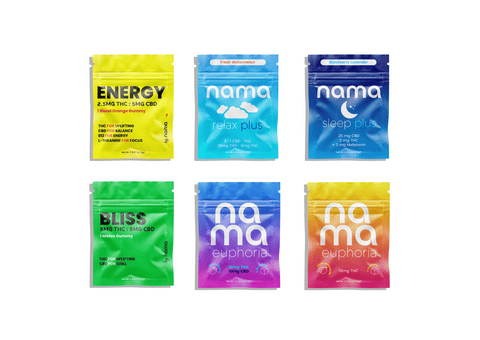
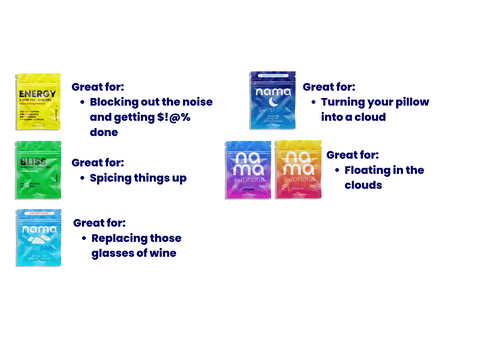
![Buzz Drops™ [THC Drink Drops]](http://www.namacbd.com/cdn/shop/files/nama_thc_buzz_drops.png?v=1711412866&width=480)
![Buzz Drops™ [THC Drink Drops]](http://www.namacbd.com/cdn/shop/files/buzz-drop-wine-comparison.png?v=1736882023&width=480)
![Buzz Packs™ [THC and CBD Powder Drink Mix]](http://www.namacbd.com/cdn/shop/files/nama_buzz_packs_thc_drink_pack_white_background.png?v=1741884660&width=480)
![Buzz Packs™ [THC and CBD Powder Drink Mix]](http://www.namacbd.com/cdn/shop/files/Buzz_Packs_Label.png?v=1741884660&width=480)
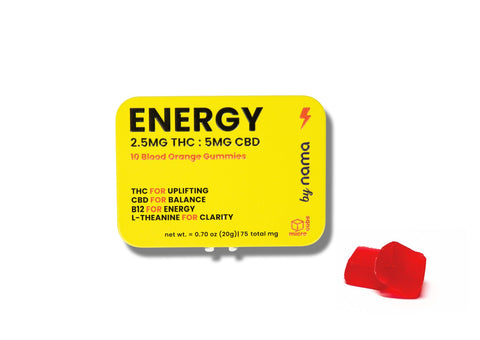
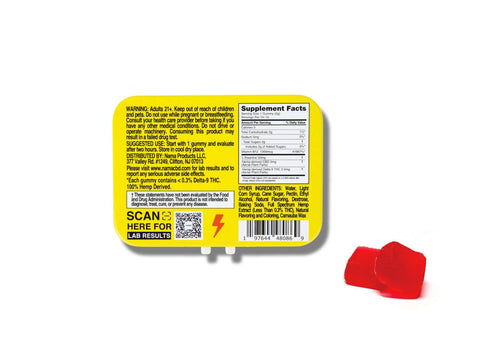
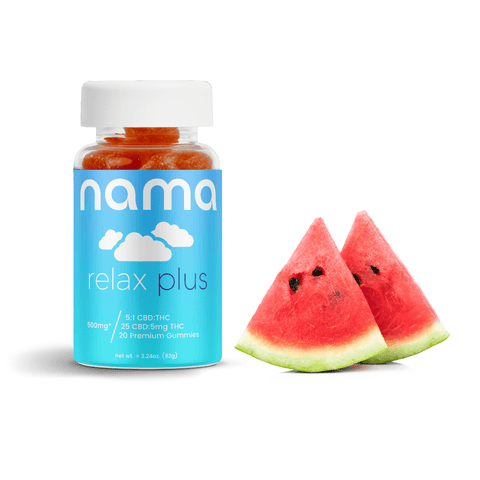

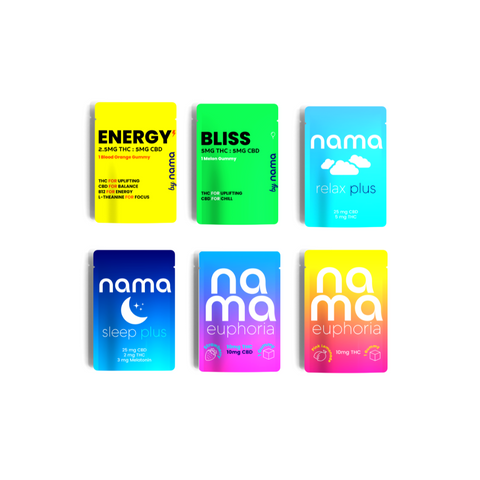
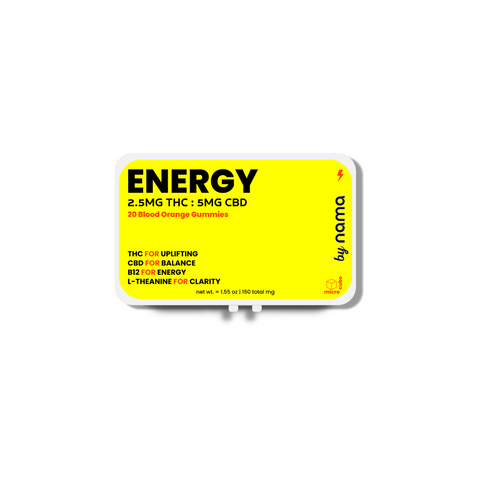

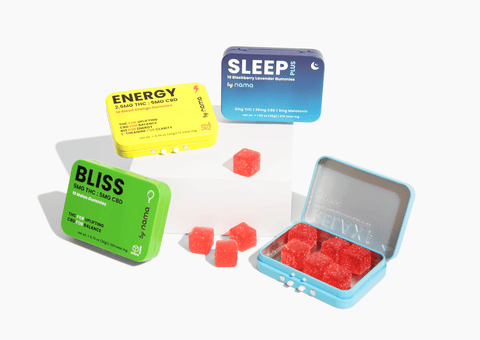
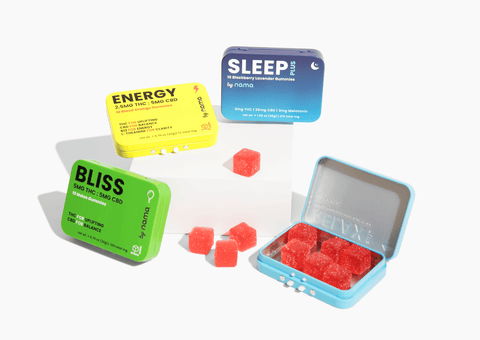
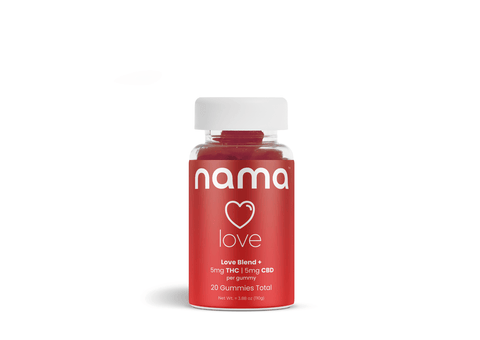

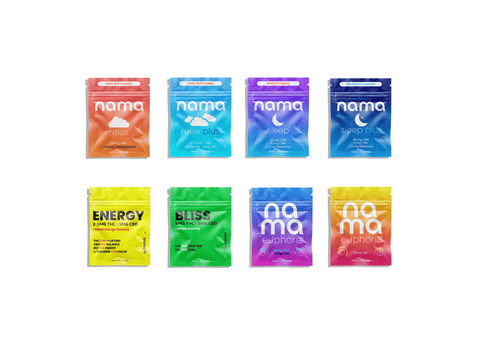

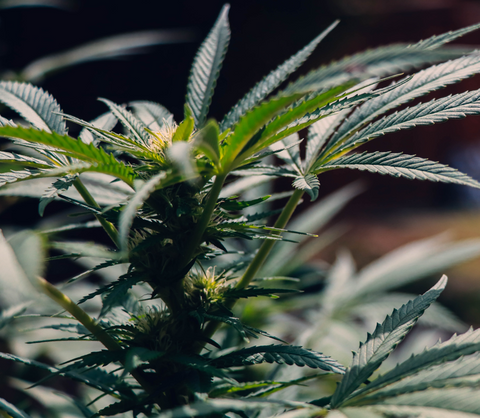


Comments (0)
There are no comments for this article. Be the first one to leave a message!